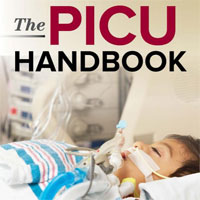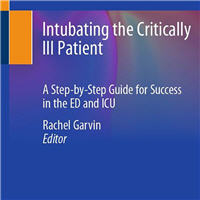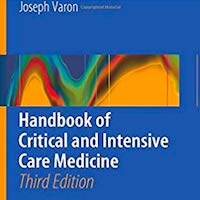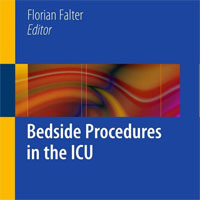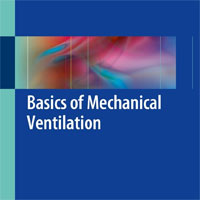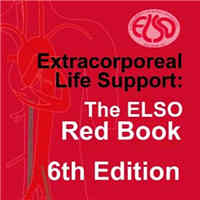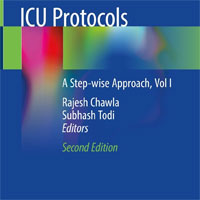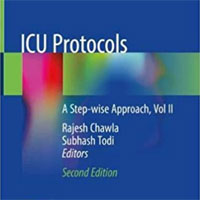Tag: stroke
Increase in Rare Brain Inflammation and Stroke Linked to COVID-19
Preliminary clinical data indicate that severe acute respiratory syndrome coronavirus 2 (SARS-CoV-2) infection is associated with neurological and neuropsychiatric illness. Responding to this, a weekly virtual coronavirus... read more
Blood Vessel Attack Could Trigger Coronavirus’ Fatal Second Phase
Frank Ruschitzka told his pathologist to be ready before the first COVID-19 patient died. In early March, Ruschitzka, who leads the cardiology department at University Hospital Zürich, noticed that patients with the disease... read more
Risk Factors for Septicemia Deaths and Disparities in a Longitudinal US Cohort
In this cohort, the major risk factors for septicemia death were similar to those for other causes of death, there was approximately a 2-fold Black-White disparity in septicemia deaths, and the strongest mediators of this... read more
Fixing Hypernatremia: Acting Fast or Acting Slow?
This is the largest adult cohort study focusing on the neurologic complications and mortality after hypernatremia correction in critically ill adults. There wasn't any evidence that rapid correction of hypernatremia was... read more
Hypothermia and Cerebral Ischemia: Mechanisms and Clinical Applications
A comprehensive review of the scientific and clinical studies that have led to the resurgence of interest in hypothermia as a neuroprotective strategy in the treatment of stroke and traumatic brain injury (TBI). Topics... read more
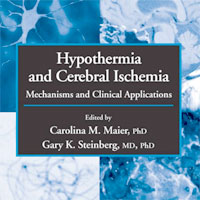
Intensive Care Unit Telemedicine, An Issue of Critical Care Clinics
This issue of Critical Care Clinics, edited by Dr. Kianoush Kashani in collaboration with Consulting Editor Dr. John Kellum, is focused on Intensive Care Unit Telemedicine. Topics in this issue include: ICU telemedicine... read more
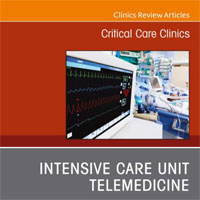
First Portable MRI Scanner for Neuro ICU
Health technology incubator Hyperfine Research and the Yale School of Medicine are testing out a first-of-its-kind, portable MRI scanner in the neuro intensive care unit (ICU). The point-of-care system, designed by Hyperfine,... read more
Parenteral Anticoagulation Not Associated with Reduced Risk of Ischemic Stroke Among Patients with Atrial Fibrillation During Sepsis
Among patients with Atrial Fibrillation (AF) during sepsis, parenteral anticoagulation was not associated with reduced risk of ischemic stroke and was associated with higher bleeding rates. Of 113,511 patients hospitalized... read more
Effect of Catheter Ablation vs Antiarrhythmic Drug Therapy on Mortality, Stroke, Bleeding, and Cardiac Arrest Among Patients With Atrial Fibrillation
The CABANA Randomized Clinical Trial. In this randomized clinical trial involving 2204 patients with atrial fibrillation, catheter ablation, compared with medical therapy, did not significantly reduce the primary composite... read more
Early Prediction of Prognosis in Elderly Acute Stroke Patients
Acute stroke has a high morbidity and mortality in elderly population. Baseline confounding illnesses, initial clinical examination, and basic laboratory tests may impact prognostics. In this study, we aimed to establish... read more
Overuse of troponin? A comprehensive evaluation of testing in a large hospital system
Troponin assays are integral to the diagnosis of acute myocardial infarction (AMI), but there is concern that testing is over utilized and may not conform to published guidelines. We reviewed all testing performed at 14 hospitals... read more
Fluid Responsiveness in a Hemodynamically Unstable Patient
Only half of patients who are hemodynamically unstable will respond to a fluid bolus. There are no historical or physical examination findings that can help us decide whether a patient is a fluid responder, but we must treat... read more
Dual Antiplatelet Therapy with Aspirin and Clopidogrel for Acute High Risk Transient Ischemic Attack and Minor Ischemic Stroke
What is the role of dual antiplatelet therapy after high risk transient ischemic attack or minor stroke? Specifically, does dual antiplatelet therapy with a combination of aspirin and clopidogrel lead to a greater reduction... read more
Mortality and Morbidity in Acutely Ill Adults Treated with Liberal vs. Conservative Oxygen Therapy
In acutely ill adults, high-quality evidence shows that liberal oxygen therapy increases mortality without improving other patient-important outcomes. Supplemental oxygen might become unfavourable above an SpO2 range of 94-96%.... read more
Prevalence for Delirium in Stroke Patients
These results underline the importance of delirium screening in stroke patients specifically during the night. Since even short delirious episodes are associated with more complications and increased disability, future studies... read more
Warfarin Nonadherence: What Factors Lead Patients with Afib to Discontinue?
Patients with atrial fibrillation (AF) frequently discontinue their warfarin therapy, and a recently-published study offers insight into factors that may contribute to nonadherence. The report, released in JAMA Cardiology,... read more
Intubation in Special Patient Populations: Intracranial Hemorrhage
Lidocaine has weak evidence to support its ICP blunting effects. Fentanyl may be a better choice. Ketamine is a reasonable alternative to etomidate during induction. No differnce in mortality exists between usage of succinylcholine... read more
The Fluid Debate: Balanced or Unbalanced
Consider using balanced fluids in your ED unless you are treating a patient at risk for cerebral edema, or a patient with a chloride responsive metabolic alkalosis, e.g. from gastric losses. Although the superiority of balanced... read more
Efficacy of Combined Intravenous Thrombolysis and Thrombectomy
Mechanical thrombectomy (MT) improves clinical outcomes in patients with acute ischemic stroke (AIS) caused by a large vessel occlusion. However, it is not known whether intravenous thrombolysis (IVT) is of added benefit... read more
Combined Intravenous Thrombolysis and Thrombectomy vs Thrombectomy Alone for Acute Ischemic Stroke
The results indicate that treatment of patients experiencing AIS due to a large vessel occlusion with IVT before MT does not appear to provide a clinical benefit over MT alone. A randomized clinical trial seems warranted.... read more
General Anesthesia a Viable Sedation Strategy for Thrombectomy in Stroke
An analysis of a New York registry with 1174 patients who underwent thrombectomy showed a correlation between general anesthesia and death. Several other studies that only compared embolectomies done with and without general... read more
Association of ICH Among Patients Taking Non–Vitamin K Antagonist vs Vitamin K Antagonist Oral Anticoagulants With In-Hospital Mortality
Among patients with ICH, prior use of NOACs or warfarin was associated with higher in-hospital mortality compared with no OACs. Prior use of NOACs, compared with prior use of warfarin, was associated with lower risk of in-hospital... read more


